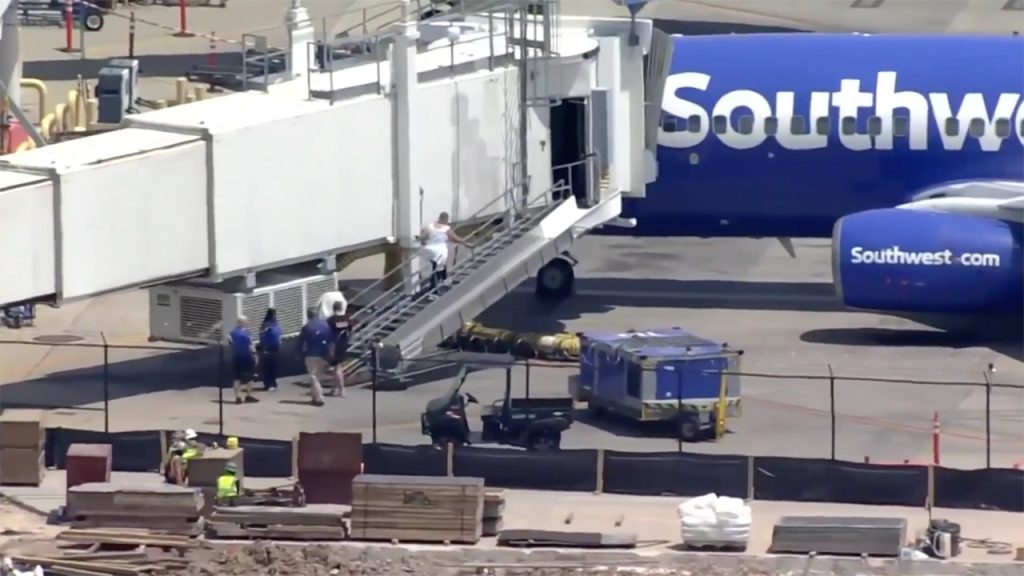A Southwest Airlines flight scheduled to fly from Houston to Los Cabos, Mexico, faced an emergency situation on Thursday morning due to a reported engine issue. Flight 3006, carrying 134 passengers, successfully returned to William P. Hobby Airport in Houston shortly after takeoff. Fortunately, no injuries were reported, and the airline has made arrangements for passengers to continue their journey to Cabo San Lucas after the incident.
| Article Subheadings |
|---|
| 1) Overview of the Incident |
| 2) Passenger Experience and Response |
| 3) Subsequent Travel Arrangements |
| 4) Safety Protocols in Aviation |
| 5) Investigations and Future Measures |
Overview of the Incident
The emergency aboard Southwest Airlines Flight 3006 unfolded in the early hours of Thursday, when the aircraft, shortly after takeoff from Houston, experienced a critical engine issue. The flight, which was bound for Los Cabos, Mexico, contained 134 passengers who faced an unexpected scare. According to a statement from the airline, the crew promptly adhered to established emergency protocols to ensure the safety of everyone onboard.
Once the engine issue was identified, the flight crew took immediate action, returning the plane safely to William P. Hobby Airport in Houston. The incident has drawn attention to the rigorous safety measures in place at commercial airlines. Moreover, officials praised the airline’s staff for their professionalism in handling a potentially dangerous situation, ensuring that all passengers were evacuated without injuries.
Passenger Experience and Response
Upon landing back in Houston, the 134 passengers were safely directed to evacuate the aircraft onto the tarmac. Eyewitness accounts describe a scene where passengers exhibited a mix of concern and relief as they deplaned safely. Many expressed gratitude toward the flight crew for their swift actions, which minimized what could have turned into a far more serious emergency situation.
Southwest Airlines, in their formal communication, emphasized that the safety and well-being of passengers and crew members is their top priority. They stated,
“We appreciate the professionalism of our flight crew in responding to this situation. Nothing is more important to Southwest than the safety of our customers and employees.”
Such commendations resonate deeply with the airline industry as a reminder of the importance of crisis management during inflight emergencies.
Subsequent Travel Arrangements
Following the incident, Southwest Airlines made prompt arrangements for the affected passengers. They offered to rebook the passengers on subsequent flights to their original destination, Cabo San Lucas. This decision was vital in maintaining customer satisfaction, showcasing the airline’s commitment to rectifying the situation efficiently.
Passengers were reassured that they could still embark on their vacation plans, and many expressed relief that the airline was taking robust steps to ensure their travel needs were addressed. This proactive response by Southwest Airlines underlines the pivotal role airlines play in customer service, especially in the aftermath of emergencies.
Safety Protocols in Aviation
The importance of safety protocols in aviation cannot be overstated, and this incident serves as a textbook example of why these procedures exist. Airlines undergo rigorous training and simulations to prepare their crews for various emergency situations, including engine failures. The flight crew on Southwest Flight 3006 followed the specific protocol to ensure a safe landing, highlighting the necessary training embedded in their professional development.
Additionally, the swift evacuation process illustrates the well-oiled machinery of safety procedures that airlines have established. These emergency protocols are not only critical for resolving immediate threats but also play a significant role in maintaining public trust in air travel. The Federal Aviation Administration (FAA) continuously emphasizes the review and enhancement of these protocols, ensuring that airlines can handle emergencies effectively.
Investigations and Future Measures
As is customary following such incidents, an investigation will likely be initiated to assess the cause of the engine issue experienced by Flight 3006. Governmental agencies, including the National Transportation Safety Board (NTSB), will collaborate with the airline to investigate the technical aspects surrounding this event. These inquiries are essential for identifying potential faults and ensuring that preventive measures can be implemented.
Furthermore, this incident could lead to broader discussions within the aviation industry about mechanical maintenance and the technology utilized in aircraft systems. Airlines might also consider revising operational protocols to enhance their safety measures and ensure problems like this are minimized. With safety being a non-negotiable aspect in aviation, industry stakeholders are likely to engage in conversations that could pave the way for improved regulations and performances.
| No. | Key Points |
|---|---|
| 1 | Flight 3006 returned to Houston due to an engine issue after takeoff. |
| 2 | All 134 passengers evacuated safely, with no injuries reported. |
| 3 | Passengers were rebooked on flights to continue their journey to Cabo San Lucas. |
| 4 | The airline’s crew followed emergency protocols effectively during the incident. |
| 5 | Investigations will be conducted to understand the mechanical issue faced. |
Summary
The emergency faced by Southwest Airlines Flight 3006 highlights crucial aspects of airline safety and emergency responses. With effective protocols in place, the flight crew ensured the safety of all passengers amidst a critical situation, thereby reinforcing the importance of training and preparedness in aviation. The incident also raises significant discussions regarding ongoing maintenance and the investigation processes aimed at securing the safety of air travel. The proactive measures taken by Southwest Airlines to rebook passengers demonstrate a commitment to customer service, underscoring how airlines can navigate challenges effectively.
Frequently Asked Questions
Question: What went wrong during the flight?
The flight experienced a reported engine issue shortly after takeoff, prompting the crew to return to Houston safely.
Question: How did the airline respond to the incident?
Southwest Airlines effectively followed emergency protocols, ensuring all passengers were evacuated safely and quickly arranged for them to be rebooked on flights to their final destination.
Question: Are there investigations following such incidents?
Yes, the NTSB and FAA often initiate investigations following incidents to assess the causes and determine preventative measures to enhance safety.
